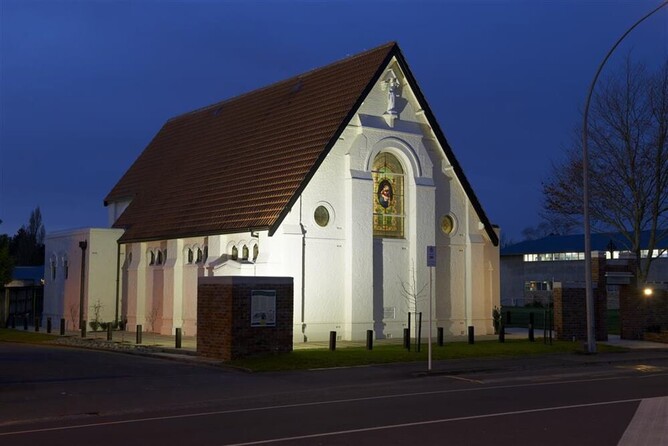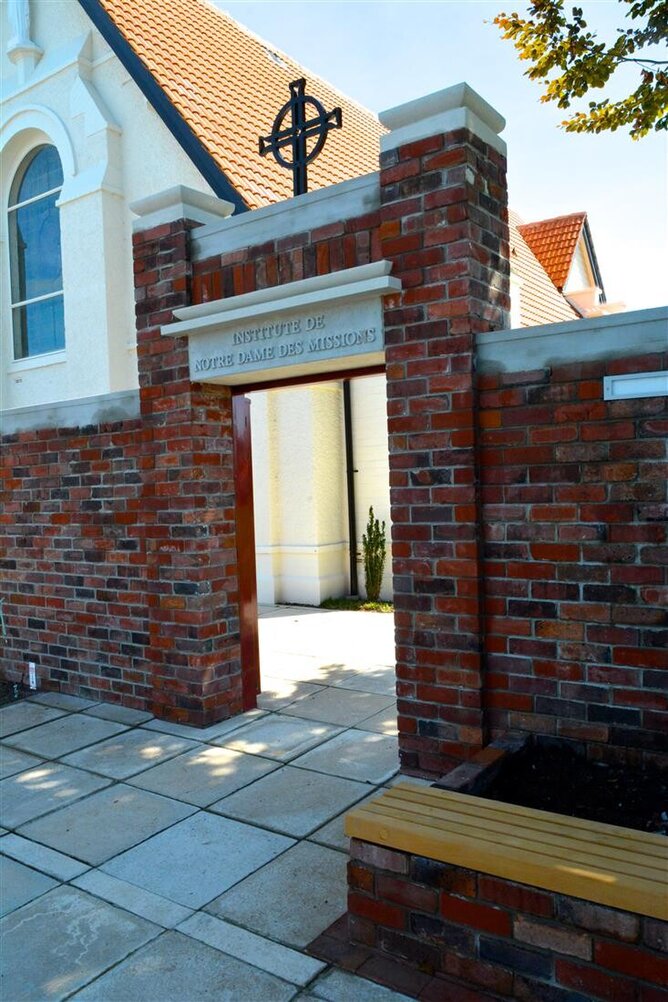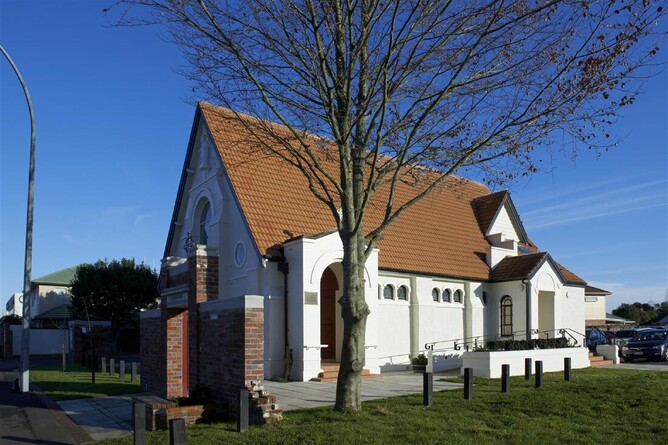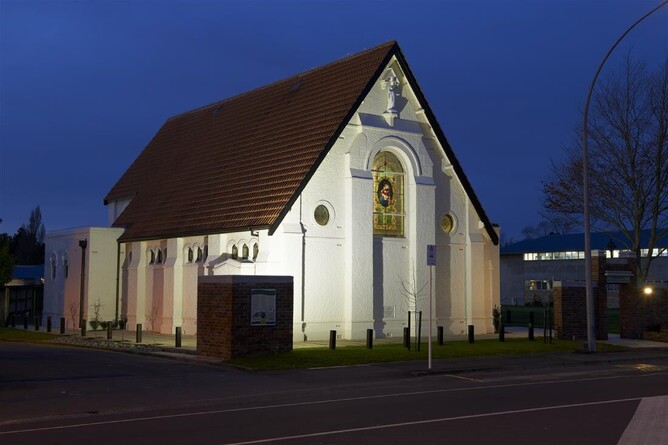The Chapel of St Mary's Convent
St Mary’s Convent Chapel in Hamilton East was constructed for the Catholic Diocese in 1926, and designed by locally-born architect John E Chitty. The Chapel is not only precious to the Diocese and the Catholic community, but is also a Category 2 Heritage NZ listed building, and a Category A heritage item in the Hamilton City District Plan.
Despite official heritage status, until recently the Chapel was relatively unappreciated by the general Hamilton public, who are more familiar with the much grander and more prominent Cathedral of the Blessed Virgin Mary literally around the corner. The modestly sized Chapel was also tucked inconspicuously between the former convent to which it was attached, Euphrasie House and its surrounding high brick walls on one side, and an enclave of townhouses on the other.
However, a silver lining to the loss of Euphrasie House and its distinctive high red brick fence has been the increased exposure of St Mary’s Convent Chapel, and recent earthquake strengthening and restoration works undertaken on the Chapel have further highlighted this previously hidden architectural gem.
Thanks to a proven track record with the Catholic Diocese and To their heritage expertise, the PAUA Architects team was engaged by the St Mary’s Chapel Trust in 2015 to assist the trust and Gray Consulting Engineers with the sympathetic design and oversight of seismic strengthening and restoration works to be undertaken on the Chapel. Particularly in light of the Church’s controversial decision to demolish neighbouring Euphrasie House the PAUA team were all the more determined to minimise the visual impact of the necessary structural work on the Chapel, and that the small improvements to access and internal interventions to improve functionality be as visually imperceptible as possible.
For the outside, architect Geoff Lentz designed a ramp and the new hand-forged steel hand rail, new concrete planters and hard landscaping around the base and entrance of the building. Lobell Construction contributed a team with the knowledge of the craft of building appropriate to the age and imperative of the building. Original subfloor vents had to be replaced with a new mechanical ducted system, so a cast was made of the original vent grates and new castings created and positioned in the original locations. Brick slips were re-laid over new structural wall areas and around buttresses to seamlessly replicate the existing patterns.
Design work inside the Chapel to improve the function, and in some cases meet modern safety regulations using linoleum flooring and rimu cabinetry in keeping with the original building removal of cabinetry that obscured windows to bring more light in; original switch plates were retained with new wiring connected; sensitive lighting interventions, including miniscule LED lighting were added; and even the colour of interior paint finishes were tweaked in response to the change of colour cast between the new LEDs and original incandescent lighting.
For the finishing touches, a statue of St Mary (from the demolished Euphrasie House) was installed in an existing niche in the south wall. LED spotlights added to the stained glass rose windows have enhanced the building’s street presence and highlighted the architectural restoration of this beautiful heritage chapel.




